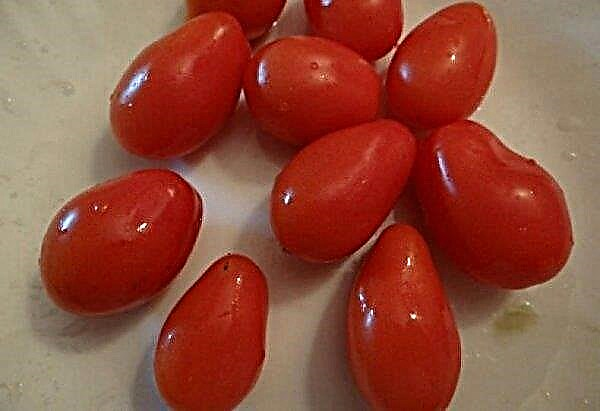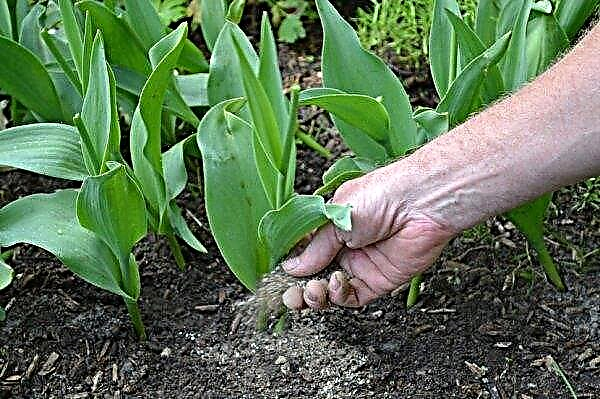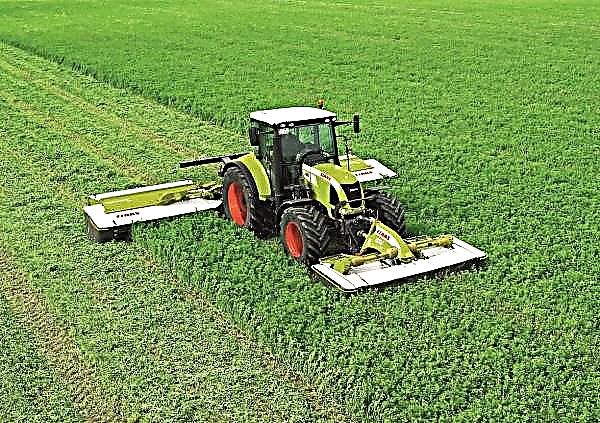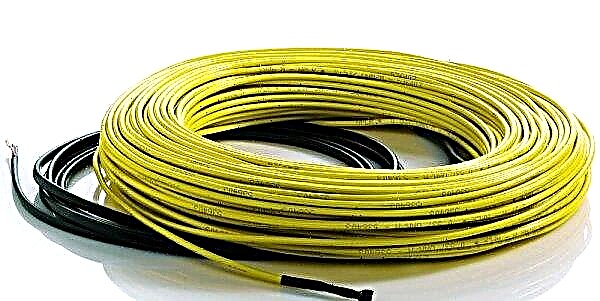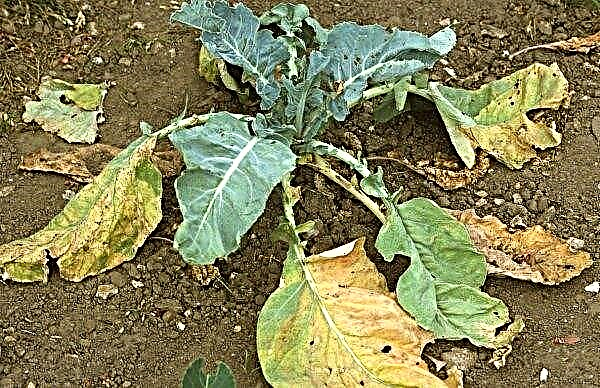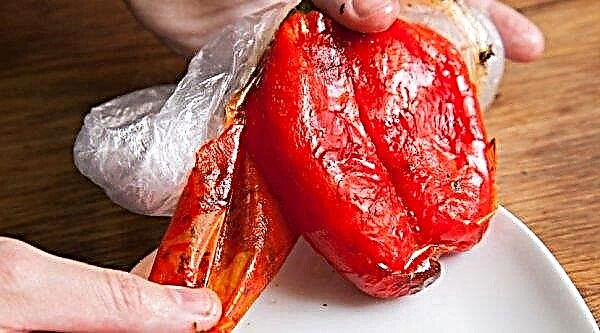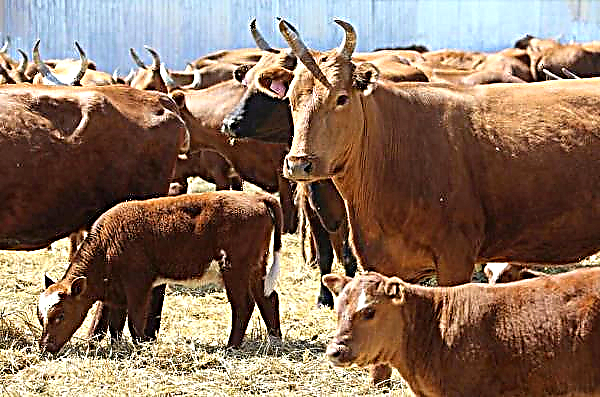In the cultivation of roses, one of the main secrets is competent pruning. About how to do this, how the procedure is carried out in spring, autumn and as it blooms, as well as everything else that needs to be known for the correct formation and development of the rose, is described in this review.
When to cut roses
The question of when exactly you need to prune roses arises among beginner gardeners in the first place. The answer to it is determined by several factors, in particular, the type of plant, its age, climatic zone and growing conditions (greenhouse or open ground), as well as the result that is expected to be achieved.
However, the correct pruning of roses should be carried out twice a year - in the spring and autumn, and, contrary to the existing misconception, the most important and responsible procedure is carried out at the beginning of the season, and not at the end.
After winter, almost all kinds of roses should undergo sanitization. Its goal is, first of all, to remove all old, dried and frozen stems, which will not only provide the bush with a healthy and beautiful appearance, but also stimulate the formation of a large number of young shoots, on which new buds will be laid.
In addition, at this time, you need to get rid of the active growth in the base of the plant, which will distract its vital juices and prevent active flowering. Also, the purpose of spring pruning is to give the bush a beautiful and neat shape.
The procedure is carried out when the frosts have finally receded, the rose has woken up, but new shoots from the swollen buds have not yet begun to grow. Depending on the climatic zone and weather conditions, this period may occur at the end of March - the first decade of April.
Did you know? It is easiest to determine the right moment for pruning rose bushes, focusing on Forsythia - the ubiquitous shrub of the Olive family, covered in spring with plentiful flowers of bright yellow color. It is the appearance of these colors that is the signal for working with a rose.
Autumn pruning has completely different goals.
During this period, the task of the grower is to prepare the plant for wintering as much as possible, namely:
- make the bush more compact so that it is more convenient to cover it (for this, all shoots are usually shortened to the same length);
- get rid of excessive thickening of the stems, which will limit the lighting of the bush;
- remove all diseased, damaged, dried up, and also not having time to form shoots (the latter in conditions of high humidity in autumn, winter during the thaw, as well as next spring, with a high probability can begin to rot under cover).
Video: autumn pruning of a groundcover and sheltering it for the winter
You need to trim all the bushes in the fall, regardless of age. An exception may be only those varieties that, due to their high winter hardiness, survive the winter without shelter (the above, however, applies only to regions where frosts are not too severe).
As for the time for trimming, it should be determined, focusing on the first decrease in night temperature to negative values.
Important! If you prune the roses before the first frost, the plant will respond to the procedure as an incentive to form new shoots, so the event will lead to a result directly opposite to what was expected.
In addition to the two types of trimming mentioned, there is another variety of it - summer. As a rule, it concerns faded roses, but in some cases it is useful to prune the bushes at the buds laying stage. At this stage, the plant is freed from the weakest shoots that formed later than others, lag behind in development and take away excess forces from the bush. In addition, if you want to get large flowers, you must also remove all buds on each shoot, except for one, the largest. The bush trimmed before flowering always looks more well-groomed and accurate.
Video: summer pruning of rose bushes
As for dried flowers, they also need to be removed immediately, and pruning is not limited to a dried bud, but applies to the entire shoot at the level of one bud from the ground. Such a procedure not only deprives the plant of an unkempt appearance, but also stimulates the development of new stems and the laying of new buds (for some species of roses this year, for others the next). Dry flowers left on the bush obscure it, thereby slowing growth and development, therefore, experienced flower growers thin out the plant by at least two-thirds by the end of summer.
Tools for work
For the procedure, you will need such tools and materials:
- secateurs (it is better to use a tool with two cutting edges: using it is a little more difficult, but it stays sharp for much longer);
- emery an electric or other tool for sharpening the pruner (if necessary);
- a garden saw, a garden knife, long-handled garden shears or a delimbing machine for trimming thick stems;
- thick gloves;
- rug under the knees;
- alcohol or potassium permanganate for disinfection of garden tools;
- garden var or Novikov liquid for processing sections;
- 1% copper sulfate for subsequent processing of the entire bush.
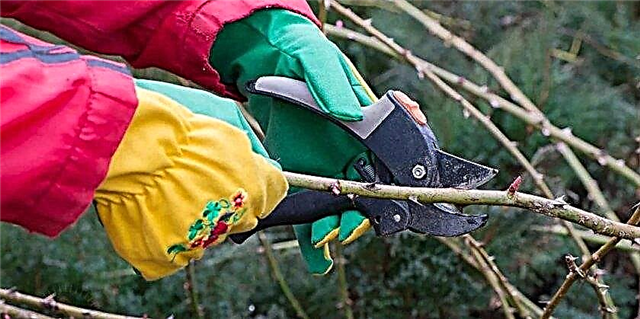
How to prune a rose
In addition to the time of year, pruning of roses has some features depending on the type and morphological characteristics of the plant.
There are several different approaches to the classification of this noble flower, however, from the point of view of the approach to its formation, it is important to distinguish between these types of roses:
- bush, or scrubs (Shrub);
- Hybrid Tea (Hybrid Tea);
- ground cover (Bodendecker);
- standard (Shtambe);
- climbing (Climbing roses).
Bush
The bush rose should be cut so that it leaves from three to five of the most developed shoots 10–20 cm long (3-4 buds each). All other stems are cut completely, at ground level, or, as gardeners say, "into the ring." When choosing a stem to be left, preference is given to younger ones (they can be easily distinguished by their lighter bark) and arranged so that after pruning they do not interfere and do not obscure each other.
Important! The weaker the bush, the stronger it needs to be cut: this procedure does not harm the plant, but, on the contrary, strengthens its immunity, including in terms of resisting diseases and pests. On the contrary, insufficient thinning of the bush provokes the formation of a large number of small and weak shoots.
It is always necessary to delete:
- dry wood (young shoots do not grow from it, while it occupies the place from which they could appear);
- stalks directed to the center of the bush and intersecting with others;
- branches of a dark brown color;
- shoots appearing below the level of the first kidney.
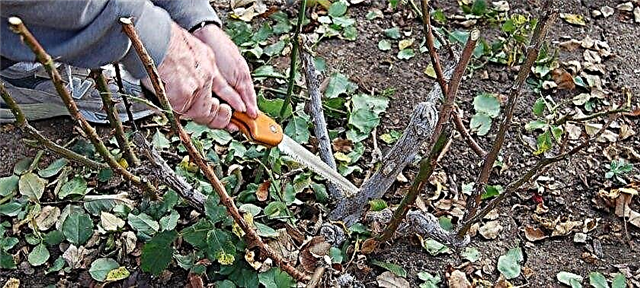
Hybrid Tea
This category of roses is the most popular among gardeners due to large beautiful flowers and a long, virtually uninterrupted flowering period. The purpose of pruning such plants is primarily the formation of a large spherical bush and stimulating the development of powerful root processes. At the same time, it is important to know that the buds of tea-hybrid roses are laid on young shoots, so old ones can be safely removed, and faded ones can be shortened.
Pruning tea hybrid roses is as follows:Did you know? The first tea hybrid rose is considered to be the variety “La France”, bred in 1867 by French breeder Jean-Baptiste Andre Guillot, who managed to cross a tea and a repair rose. At the same time, two more varieties claim the same title - Cheshunt Hybrid and Madame Lacharme, bred five years later.
- Before planting a seedling (it is best to do this in the autumn), its stems are shortened and the longest, sickest, damaged roots are cut.
- After wintering in a young bush, all shoots are aligned at a height of 15 cm (five to six eyes should remain on the stems).
- In the autumn, before shelter, the rose is freed from all dry and not having time to form buds of shoots, all others are shortened by a third.
- In subsequent years, in spring, the rose is pruned at the level of 20–25 cm or 5–6 buds, as shoots are formed, growing inward and intersecting are removed, and old and unripened stems are removed in autumn, and the rest are shortened.
Video: correctly pruning hybrid tea roses
The borderline between tea-hybrid and polyanthus roses is occupied by the so-called floribundas. These roses need to be pruned not as radically as hybrid tea. So, in the spring period it is enough to shorten the shoots of last year by a third, and cut off all the older stems by about two-thirds of their height.
Ground cover
Ground-cover roses are a very special class of hybrid plants that are capable of spreading on the ground, covering rather large areas with bright and fragrant carpet. Despite the fact that it would not seem necessary to form such a bush, contrary to the existing misconception, he needs pruning no less than other varieties of a noble flower.
This procedure has its own characteristics, namely:
- Before planting, long and sore roots, as well as damaged and weakened shoots, are removed from the bush.
- After the rose has blossomed for the first time, it is necessary to cut off all the branches on which the flowers were formed, that is, actually cut the bush radically, leaving only young shoots of the current year on it. But even they should be carefully evaluated, removing the weakest and shortening all the others to a height of 10-15 cm (2-3 eyes).
- In the spring, a small sanitary pruning is carried out with the removal of interfering and frozen shoots.
- The processes directed upwards, and not creeping to the ground like a fountain, should be cut off.
- In the autumn of the second and subsequent years of the year, only half of the faded shoots are completely cut off, the rest are shortened to 2-3 eyes. The middle of the bush is thinned out so that the branches do not cross each other.
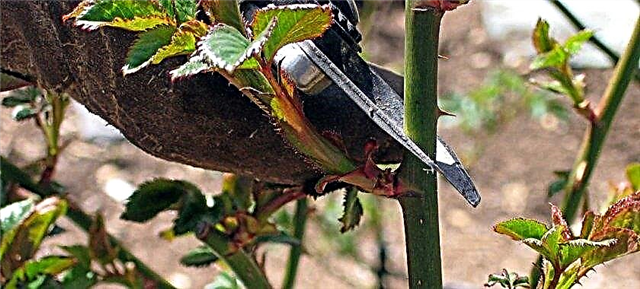 Some gardeners take a slightly different approach to pruning ground cover roses, carrying out the above-mentioned cardinally shortening of the bush not every fall, but only every five or six years. But even these experts agree that periodic pruning is necessary for the plant, otherwise it will simply stop flowering.
Some gardeners take a slightly different approach to pruning ground cover roses, carrying out the above-mentioned cardinally shortening of the bush not every fall, but only every five or six years. But even these experts agree that periodic pruning is necessary for the plant, otherwise it will simply stop flowering.
Stamp
A stem rose is a noble variety or hybrid grafted onto a specially shaped straight trunk (stem) of a wild rose, or wild rose. Since vaccination is usually carried out at a height of half a meter to two meters, the result is a plant that is a lush bush that rises above a thin leg. Such an unusual structure requires a very special approach to shaping and trimming.
Did you know? If you use ground cover or climbing mushroom as a scion, you can get a very unusual and beautiful "weeping" rose.
In spring, dead shoots are removed from the annual plant, and all others are shortened at the level of 15 cm from the base (the place of grafting) so that 3-5 eyes remain on each branch.
Before hibernation, dried, damaged and not able to bloom shoots are removed from the bush, and those that bloomed are shortened.
In subsequent years, spring pruning involves the removal of old, intersecting and interfering branches, all others are formed as follows: adult lateral branches are cut at a height of 10 cm (2–4 eyes), young ones at a height of 15 cm (3-5 eyes). Particular care must be taken to ensure that the middle of the bush is not very thickened. In the autumn after flowering, standard sanitary pruning is performed.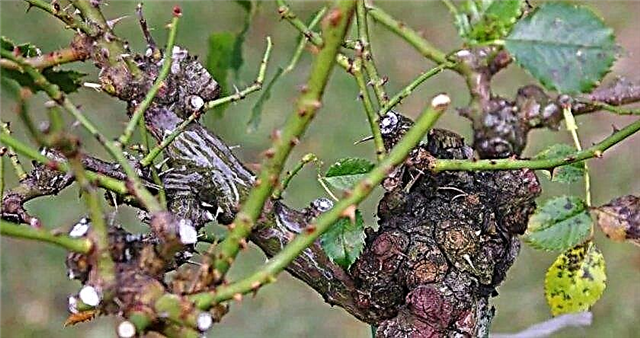
A mandatory element of pruning rose roses is to remove all shoots and shoots that appear below the vaccination site (wild rosehip will grow from it).
Wicker
Many amateur gardeners answer negatively to the question of whether to cut climbing roses. However, in reality this is not so. If you allow the liana to develop “at its own discretion”, after a few years it will turn into a huge and untidy green massif, which will even be difficult to approach.
Some difficulties in studying the feature of pruning climbing roses are that this category of plants is very heterogeneous in its composition. Roses, radically different from each other according to different criteria, including the nature of flowering, belong to vines. It is these differences that determine the cropping method.
There are several different classifications of climbing roses according to the method of their formation, but the simplest is the division of plants into single and multiple flowering. Consider the trim features of each of these types.Once blooming
This category of liana is characterized by the fact that its flowers are formed on the shoots of last year. Based on this, from six to ten shoots should be left on the bushes, carefully watching that half of them fall on two-year-old stems (they will form the buds), the second half was a “bookmark” for the next year.
In September, when the rose bloomed, all the stems on which the flowers formed were cut off, since they would not bloom anymore.
Video: pruning single-blooming climbing roses
Re blooming
A distinctive feature of these vines is that on the same shoot flowers bloom for several years in a row, and several “tiers” of branches can leave the main stem, on each of which, sometimes up to the fifth, flowers appear from year to year . Such a rose should not be prevented from revealing all its “potential” by annual removal of flower-bearing shoots, it is enough to carry out such a renewal procedure only after the fourth year, since in the future the flowering on the old stem gradually begins to lose intensity.
If the main work on the formation of once-blooming roses is carried out in the summer, then in the re-blooming, the most important time of the year is spring. During this period, it is necessary to carefully evaluate the bush and shape it in such a way that the number of shoots suitable for flowering this year is from three to seven. Their gradual substitution should be provided by two or three young annual stems, all other emerging shoots can be removed.
Important! In order not to remember how many years this or that branch bloomed, there is a simple rule: for a climbing rose, the number of old shoots removed must always correspond to the number of young lashes that appear at the base of the plant. The same method is used when in doubt about which variety a particular rose belongs to.
The above-described rules for forming pruning do not cancel the sanitary procedures for removing old and interfering branches, as well as dried flowers.
General rules for pruning roses
Regardless of what time of year and in relation to which category of roses pruning is carried out, the following standard set of rules should be followed in the process of work:
- The procedure is best carried out on a sunny day, while it is important to make sure that no rain or snow is expected in the near future (increased humidity increases the risk of infection in places where the integrity of plant tissues is damaged).
- The pruner shears, scissors, saw or knife used in the processing of the plant should be very sharp. For this, in addition to timely sharpening, they must be stored in a clean and dry place.
- Before starting work, the cutting tool must be thoroughly sanitized.
- Any rose care measures are carried out only with special thick gloves to prevent cuts and pricks of thorns.
- You need to start the procedure with a careful inspection of the plant and drawing up a “plan” of the future bush (selection of branches to be removed, marking the place of cut).
- First, the parts of the bush located at the base are removed, then a gradual upward movement occurs.
- Particular attention should be paid to thinning the central part of the bush, this is necessary so that the plant can receive enough light and air.

- The slice should never be done at right angles, it should be done diagonally, withstanding an angle of 45 º.
- Trim the shoots in one precise motion. Do not pull and tear notched branches.
- The cut is done not under the kidney, but above it, with an indent of 5-7 mm.
- The cut should be at the level of living and green tissue. If after cutting the cut turned out to be dry or black, it is necessary to repeat the procedure below to the base.
- In addition to withered, broken, old, dry and blackened branches, young shoots, the thickness of which is less than 5 mm, must also be removed.
- Leaves remaining under cut branches are also removed.
- Slices of thin shoots should be disinfected with alcohol or a solution of potassium permanganate, and “hemp” of thick branches, in addition, should be covered with garden varieties.
- After finishing work, it is recommended to treat the bush with a one percent solution of copper sulfate.


